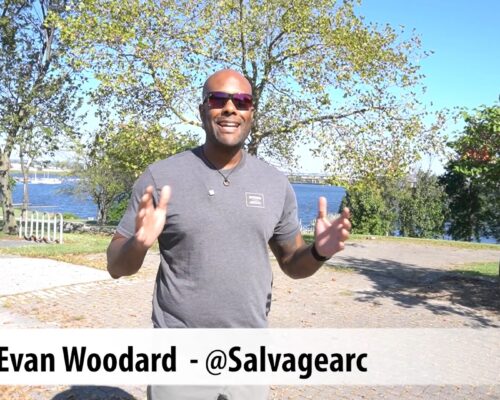At 6:30 a.m. on a breezy Saturday morning, you might think the Kent Island Yacht Club would be a quiet place to be. Not if its the morning of the 2024 Bay Paddle! With four events going on simultaneously, over 200 racers from all across the country gathered at the Club for the annual event that has has become a highlight for paddlers all over the mid-Atlantic.
The 216 paddlers had signed up to compete in five classes, some planning on racing the 35-mile circuit around all of Kent Island, others for a shorter 3- or 10-mile course. A solo class of hearty souls paddled the entire 35 miles alone in kayaks or outrigger canoes. The winning team was Washington Canoe Club from the Washington, D.C. area, who completed the race in 4:35:07.21. In the solo 35-mile race, James Dunbar finished with an impressive finish time of 5:10:32.43.
Of course the large outrigger canoes, paddled by six individuals, are always a big draw, and this year was no exception. Hawaiian outrigger canoe racing builds on the culture and tradition that spans centuries prior to the recorded history of Hawaii. The indigenous sport survived the oppression of being outlawed by foreign settlers. King David Kalakaua, a Hawaiian monarch, is credited as the catalyst of Hawaiian cultural resurgence during the late 19th century. He restored outrigger canoe racing as a legal sport for the Hawaiian people. Since then, outrigger canoe racing found its way around the world.
Modern-day boats are 44 feet long and weigh just 150 pounds when empty. These sit six paddlers and are crewed by teams of 10, with four relief paddlers waiting in a chase boat until its their turn to take up a paddle and help to push the boat forward.

Jennifer Cox of KE Aloha, a seasoned OC6 Racer and President of the East Coast Outrigger Race Association, explained the process of swapping out paddlers while underway. As a team prepares for an exchange of paddlers, the chase boat speeds ahead and drops the new paddlers into the water. The new paddlers slap their hands on the water to show the boat where they are, and the boat steers toward them and as they approach. Exiting paddlers store their paddles and jump over the starboard (right) side of the boat, while the incoming folks hoist themselves over the port side of the boat (the same side as the outrigger) and grab a paddle and join the cadence of the others.
All this happens in about 15 seconds! Once the swap is complete, the outgoing paddlers form a circle and await the chase boat for pick-up. They catch a break, hydrate, and repeat the whole process less than 30 minutes later.
The racers returned to KIYC for an authentic Hawaiian Luau and an ample amount of celebration.
The East Coast Outrigger Canoe Association(ECORA) was founded in 1997 with eight member clubs to formally establish Hawaiian outrigger canoe racing on the East Coast of the mainland United States and Canada. This ignited the founding of nearly 30 regional outrigger canoe clubs by 2002. Today ECORA thrives in nearly every coastal state, from Ontario to Florida, and welcomes interested paddlers to join an existing club or form a new one. For find a club and get involved, click here.




